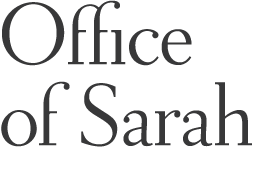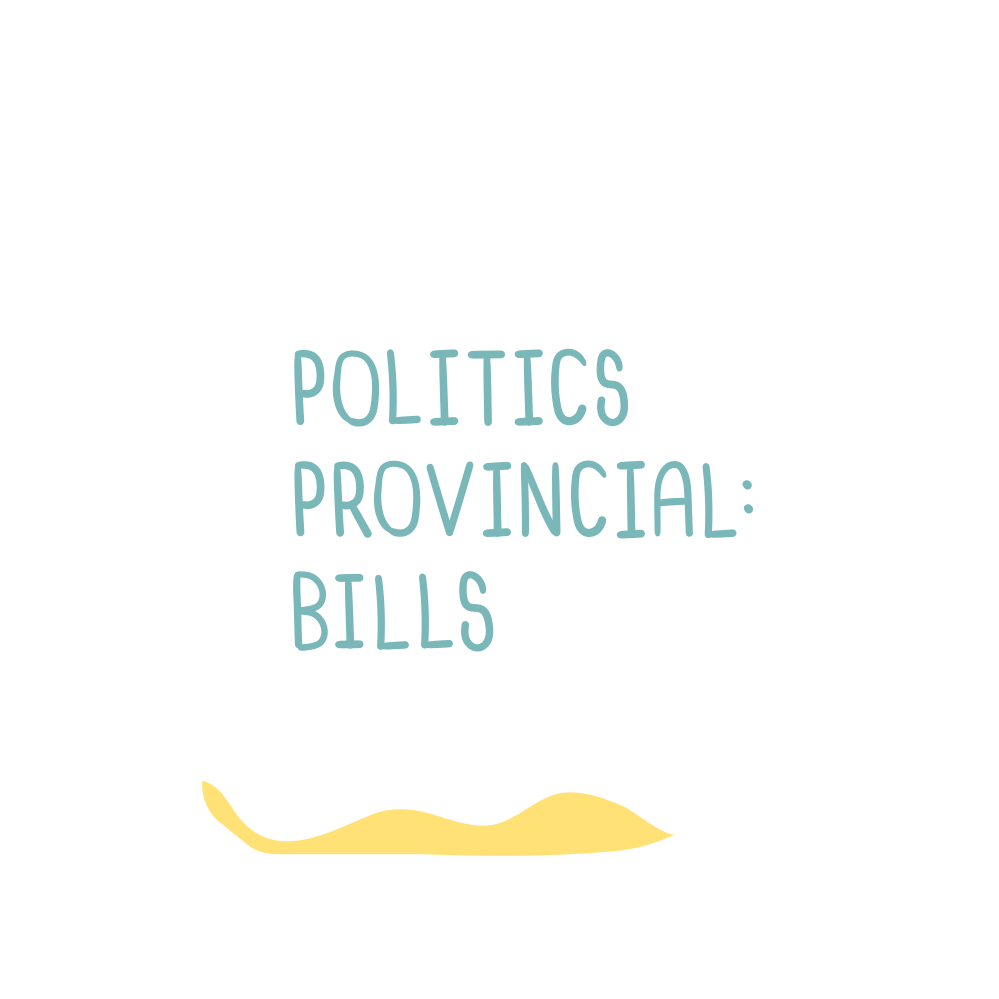Provincial Politics: Bad Carpets and Bills
I used to think of laws as immovable, heavy things, handed down directly from Socrates, God, or our alien overlords. But they aren’t! Some of them are bad, many are amendable, and two things are for sure: laws are all human-created, and new ones are being built and destroyed almost every damn day. So it’s worth learning exactly how they get made.
Note: if you know as little about politics as I do, I suggest you go back and read last week’s intro to provincial government first.
Bad carpets and Bills
In the Room of Terrible Carpet (also known as the Legislative Assembly), the process of taking a proposed Bill and turning it into official Law happens in a series of four main steps. For those of us who don’t enjoy 7-hour-long meetings, it’s about as tedious as it sounds. Ahem, if I may:
First Reading: a Bill is introduced to the Assembly. Members (i.e. all the MLAs) go home and read it over. I suspect it’s a bit like school: a few keeners will carefully read the whole thing and write thoughtful questions and commentary; a few will scan the Coles Notes summary; and finally, a few will go golfing.
Second Reading: the Bill is debated under the guidance of the Speaker (okay, this is where some things get a little spicy. Did you know the Speaker is an MLA elected by secret ballot on the first day of a new Legislature? Secret ballots! The Speaker also gets to wear this costume which includes a very cool looking pirate hat and for sure some of these artifacts have been used for fantasy role-play by some saucy former Mr. Speaker). At the end of the debate the Speaker calls for a vote. If the Bill passes the vote it heads on to…
Committee of the Whole: the Speaker drops the devastatingly gorgeous Mace and leaves their throne (maybe for some role-play in the back hallway, that cheeky minx), and by doing so magically changes the situation (if such a change can be thus described) into a committee meeting. The Bill is studied, paragraph by paragraph. More debating. Amendments may be made. I’m sure people take bathroom breaks (hello, where that Speaker at with his jaunty hat) or are secretly looking at Insta on their phones under the desk because they were playing golf yesterday and have no clue what’s going on. Finally, the committee Chair texts the Speaker, like “Spks where u at / we r 👍👍” and the Bill moves onto…
Third Reading: one final debate fest, one final vote, because why the hell not! If the Bill passes the 3rd reading, it will roll along to the Lieutenant Governor for…
Royal Assent: I feel very strongly that the Lieutenant Governor issuing Royal Assent should in all cases be a Drag Queen dressed as The Queen.
A Government Bill, Public Bill, and Private Bill all walk into a bar…
Now we know the four-step process for passing a bill into law, but how does it get brought up to the Assembly in the first place? There seem to be three main ways that Bills get introduced:
Way #1: Public Bills
Opposition MLAs and leftover MLAs (i.e. non-Minister MLAs) can propose Public Bills (re: leftover MLAs: I’m told they’re called “backbenchers” or “private Members” but the latter sounds like the sort of thing you’d read in an erotic romance novel, the former sounds like they’re playing baseball, and I’ll use a food metaphor any time I get the chance). Public Bills go through the same process as any other Bill, with the significant difference being that they’re much less likely to ever get approved since they’re often pitched by Opposition Members (and you can imagine how very fun it would be for the ruling party to vote “No” just because they can! Like a toddler with a toy. The power must be intoxicating and oh-so-delicious).
Even if a Public Bill DOES get approved—just to further clarify or confuse you—it’s a rule that these Private Members’ Public Bills (yup, that’s what they’re officially called) cannot require the use of public funds. Meaning your tax dollars are safe (?) in the hands of the Cabinet Club, which I promise to explain soon.
Way #2: Private Bills
Proposed by Opposition or leftover MLAs, Private Bills are limited to “exceptional situations” and affect only one group or a few people (as opposed to a law that applies to Albertans as a whole). These Private Bills can propose influential changes, but they are rare and would still pretty much require the Cabinet Club nod of approval to get passed. Which means it’s time to talk about…
Way #3: Government Bills and Cabinet Club
A cabinet is a cupboard with drawers or shelves, but for some inexplicable reason it’s also a bunch of Ministers (not to be confused with members of the church clergy, of course) and a Premier (do you think the French call their Premiers “Firsts”??). The Cabinet of Ministers is like an exclusive club of cool kids, and all the leftover MLAs are the kids who were cool enough to be invited to the party, but definitely not cool enough to be part of the inner circle. If I had to hazard a guess I’d bet that some of them are secretly bitter about that fact.
The Cabinet is the main spout from which most winning bills flow. A Government Bill is the one that the Cabinet first schemes in their secret club and then introduces to the whole Assembly. The leftover MLAs from their party will generally support whatever Bill the Cabinet pitches because – the Leftovers want to impress the cool kids? Weasel their way higher in the echelons of their party, à la Game of Thrones? Maybe they swore a blood oath? Bullying? All of the above??
The whole point of hanging out in the Room of Terrible Carpet is to pass laws, and it turns out to be pretty easy when you’re the majority government. Like I mentioned in my last post, the UCP currently have 63 seats in Alberta; the NDP (the official Opposition) have the remaining 24 seats. In short, the UCP will always have more hands in the air voting yay rather than nay.
How do we get involved with Bills?
We’re all kind of involved with Bill creation, in that the politicians (or Party) who win the election get to make the Bills. On a spectrum of least-involved to most-involved, voting in your Provincial election falls into the “barely-involved” category. You could, of course, go to the other side of the Bill-involvement spectrum by becoming a full-time politician, getting voted into office (as part of the winning Party’s caucus), and then worm your way into the Premier’s Cabinet. However, I suspect many of us are wondering if there are any options that exist somewhere in the middle: the “Goldilocks of Political Engagement”, if you will. Perhaps some of the following options will feel just right:
Petitions
If you wanted to put together a very kindly-worded non-partisan Petition addressed directly to the Assembly (as long as it doesn’t require the spending of any tax dollars, of course) you definitely could. Although I don’t know why you would take the time and effort, because this sounds like an awful lot of work for something that can’t have any public dollars attached to it, and apparently petitions are mostly useless.
Talk to your MLA
The first and primary job of your MLA is to advocate for you by arguing with other politicians—surrounded by terrible greenish carpet, for a tedious amount of hours—so you don’t have to. Hurrah for that, right? Even if you didn’t vote for your MLA (or didn’t vote at all!) they still (according to the books) have a duty to represent you. So if you have information or ideas that would be useful for building (or dismantling) some provincial policy, they might be able to help you get it heard by the Assembly. If your MLA is also a Cabinet Minister – jackpot! You’ve got a voice in the inner sanctum. You can also reach out to Cabinet Ministers (regardless of whether they are your personal MLA or not) about any issues that pertain to their specific Ministry, and maybe get your concerns heard.
Unless, of course, your goals go counter to party lines… in which case, your MLA or Minister will most definitely and assuredly not help you. Even if your MLA is on-board with your goals, if they’re part of the Opposition the best they can do is vehemently suggest or oppose, but not really kick anything into action. Which brings me to the last item on the list…
Get involved in a Party and Elections
This is a hard-truth adult moment. Are you ready for it? Ok. Remember when you played Little League (I mean, I don’t and didn’t, but I’ve heard the stories) and parents/coaches were like, Everyone’s a winner! and y’all got a ribbon? That was a lie. Only one team can win the game, and in politics (just like in sports) there is only ONE winner-winner-chicken-dinner who holds the power. You can write and counter and argue to your heart’s content (and trust me, the Opposition MLAs do) but in the end it’s going to come down to the fact that the ruling party is large and therefore in charge.
With the current system in mind, the best way to get Bills passed is to find a party that’s in-line with your values, join up, and then do everything in your human power (volunteer, door-knock, phone, donate, work, beg your neighbours) to get good people elected.
What makes for “good people” when we’re talking about MLAs? You know what, that’s a great topic for next week’s post!
The Upside-Down
Before I leave you, I would like to flip the current system upside-down to present another option (picture a dramatic game board flip like in Stranger Things).
Right now our electoral system is a “winner-takes-all” first-past-the-post system. Meaning a candidate doesn’t have to have the majority of votes to win, just the most votes in their particular riding. So if John got 25% of the votes, Paul got 25%, George got 24%, and Ringo got 26%, Ringo would win the riding and all the other votes would get discarded. Even if Paul’s Party had 55% of the votes overall (the “popular vote”) across the province, it wouldn’t matter: Ringo would get to make 100% of the decisions, and Paul would be left at home singing All the Lonely People.
But it doesn’t have to work this way! For example, one way that we could make the votes of all citizens count, and get a more diverse group of parties and MLAs represented in Assembly, is through a system of Proportional Representation. There are many different ways this can work, but in brief it would mean that if 55% of people across Alberta voted for Paul’s Party, then Paul’s Party would get 55% of the seats in the Assembly; if 25% voted for John, John’s Party would get 25% of the seats, and so forth. It would be far more representative of what Albertans are actually voting for, and would allow for coalitions to vote through Bills that better reflect the actual desires of most Albertans.
For example: in our last election (using our current “winner-takes-all” system) the UCP won 55% of the popular vote (i.e. out of all votes total) but got 72% of the seats. Proportional Representation would mean that the UCP would only get 55% of the seats, to better reflect the actual proportion of their support base. Evidence suggests that a Proportional Representation system can encourage smaller parties to form and thrive, since voters would know their votes wouldn’t be “wasted”. There are many, many countries who successfully use Proportional Representation systems, such as New Zealand (which has helped them elect more women and ethnic minorities), the Netherlands (which has been run by coalitions for more than 100 years), and 20+ more.
Proportional Representation would not only better reflect the views of Albertans as a whole, it would make Assembly so much more exciting to participate in. Suddenly all those debates have real meaning, and the potential to sway the votes of real MLAs! Now that is a Bill I could get behind.
I pulled so much from this useful “Citizens Guide” doc for this blog post, if you are curious to read more about these processes.





